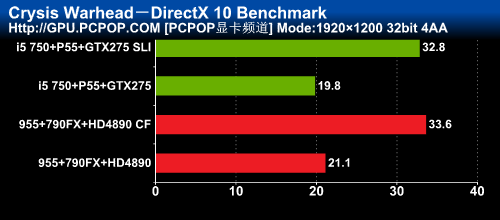Dual core / MCM: This generation supports a new "hard" method of dual gpu rendering that differs from previous Crossfire implementation that we see R800 and in rv870 crossfire situations. The chinese translation is "dual core" or split frame hardware- Has something to do with the way the shaders/alus etc operates inside an individual gpu (a method of simultaneous operations in the hardware, similar to dual core, yet not actually two dies in one package ala MCM). Perhaps there is no more real-time compiler in the driver and its all handled on the hardware level by the scheduler. Because the core of the chip is so modular & scalable with certain areas sharing parts of the die (ROPS + Memory controller logic), you are able to divide the specs in half (1600/256/80/32 to 800/128/40/16) and have two parts (rv870/rv830) and rv870 appears as two rv830's, yet it is still only one die. Hence term "dual-core" - more like "modular". Some people think, yes, but all GPUs are multi-core because each of the shaders is like a core by itself. Well, here we are dealing with two large arrays of 800 shaders, along with other standalone logic that communicates with either one of the two identical arrays. More specifically, one Rv870 die is composed of two Rv830-like 160x5 clusters/shader arrays (like two current-gen revamped rv770's in one die) sharing certain features, but connected via "internal crossfire" working in unison and the entire design is a continuation of R600 architecture.
It is load balanced, efficient, and requires no crossfire software optimization (because it is hardware level communication); it works via SFR 8*8-32*32, and is bandwidth intensive. The board is using next-gen 5ghz Gddr5 to provide the required bandwidth. So, apparently they've slapped together two 40nm rv770's... so it's easy to see where "dual-core" confusion comes from. Cypress is like a 40nm 4890x2 in one die! -So, it is like a "native dual core" CPU. Now that specs are known for Cypress & Juniper (rv870 & rv830) you can expect that the remaining parts Cedar & Redwood (rv840 & rv810) are 3/4 Cypress & 1/4 Cypress respectively, and that Hemlock (r800) is 2 x Cypress in the same fashion as the HD4870x2 on a single PCB. So, Cypress is like a larabee, except that it uses 2 rv770 cores, whereas larabee is using several P54C cores. (Even though this isn't an actual rv870 die shot, rather an artist's rendition posted earlier - when you do see an actual one, it will look more like the first two images ie. a symmetrical reflection of two identical core areas over a center axis, rather than the third picture - which is an actual die shot of rv770. Notice in the 3rd pic that the rv770 is asymmetrical by design, not resembling a dual core architecture.


































Bookmarks